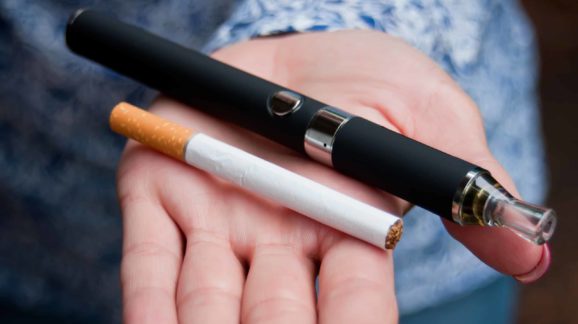Tobacco Control’s Latest Self-Fulfilling Prophecy

Photo Credit: Getty
If you want to make something irresistible to teenagers, portray it as a forbidden fruit. That is what has happened in the U.S. with e-cigarettes. As I and others have documented, youth experimentation with nicotine vapor products was relatively rare until anti-tobacco advocates and the news media launched a publicity offensive about the youth vaping “epidemic.”
Predictably, as more teens believed all their friends were vaping, more became curious about this thing their parents, teachers, and other authority figures seemed so worried about. If we don’t want the same thing to happen with heated tobacco products, journalists, activists, and health authorities must use extreme caution to avoid starting yet another unwarranted and likely-to-backfire moral panic.
Most Americans have probably never heard of heated tobacco products (HTP) because the U.S. the Food and Drug Administration (FDA) has only approved one such product for sale in the U.S., the IQOS, manufactured by Philip Morris International. Because the majority of the harm caused by smoking comes from combustion or the burning of tobacco and paper, the evidence indicates that HTPs, like other non-combustible products (such as e-cigarettes and snus), may offer smokers a way to get the nicotine they enjoy with vastly less risk. The FDA seems to agree, giving IQOS a greenlight since June 2020 to be sold and marketed as a “modified risk tobacco product.”
Outside of the U.S., HTP seem to be having the hoped-for effect of getting smokers to switch to a less harmful option. In Japan, for example, where HTPs have been sold since 2016, there has been a remarkable decline in cigarette purchases; nearly a 43 percent drop in sales in just five years. But those who want the world to be completely smoke- and nicotine-free are now taking aim at these products. And, as prohibitionists usually do, they are trying to drum up a panic by exploiting concerns about children.
According to a recent story by ABC News, heated tobacco is just the latest ploy by tobacco companies to “hook” the next generation on nicotine. But the article’s author admits that use of HTP by youth is exceedingly low. As she notes, a recent study of survey data found that among 10th and 12th grade students in California less than 1 percent reported ever using HTPs. In fact, according to the study cited in the story, that number is closer to 0.7 percent of youth who reported ever using an HTP. Even assuming those who responded to the survey understood the question and answered accurately, such low numbers wouldn’t seem worthy of a news story, let alone one so alarming.
But even if the number of youths using HTPs is small, the article focused on the concerning fact that just under 9 percent of those surveyed students reported hearing of HTPs. And generating that concern seems to be the purpose of the study and the news article about it. “Our goal was to raise the alarm,” one of the study’s authors told ABC News;“we fear this might be like the new e-cigarettes.” If these researchers create an unwarranted public panic and cause news media to run an endless stream of headlines about youth HTP use, this very likely will play out exactly the same way as the so-called youth vaping “epidemic.”
In the U.S., most youth use of e-cigarettes has been and remains experimental. A vanishingly small number, 0.4 percent, of adolescents who never smoked regularly use nicotine vapor products. Prior to 2017 these numbers were declining, but when the FDA declared youth vaping an “epidemic,” and an avalanche of news reporting followed, youth experimentation with vaping spiked dramatically. The reason is simple. As the youth in these surveys themselves admit, the thing that convinced them to try vaping was “curiosity.” And that curiosity was generated by activists and media relentlessly warning the public about youth vaping.
In places where the government and media focus their communications on vaping’s ability to help adult smokers quit, there has not been a similar surge in youth experimentation. Even here in the U.S., when the focus of media and health authorities refocused on the COVID-19 pandemic, youth vaping suddenly went down. That was not because of lockdowns limiting youth access, as their use of other controlled substances, like alcohol and cannabis, remained stable.
It should be obvious that youth don’t respond to alarm as we might hope. To the contrary, the more attention we devote to discussing what kids shouldn’t be doing, the more likely they will be to do exactly that. The use of HTP by adolescents should certainly be monitored, but if anti-tobacco researchers and activists, the media, and the government truly wish to avoid an “epidemic” of heated tobacco use by youth, they ought to do everything in their power to avoid creating a public panic about it. That will only result in yet another self-fulfilling prophecy.